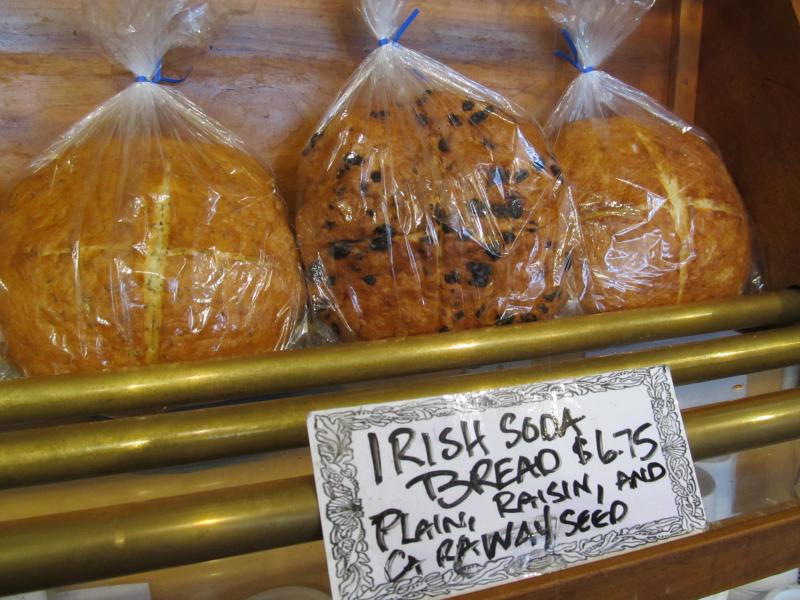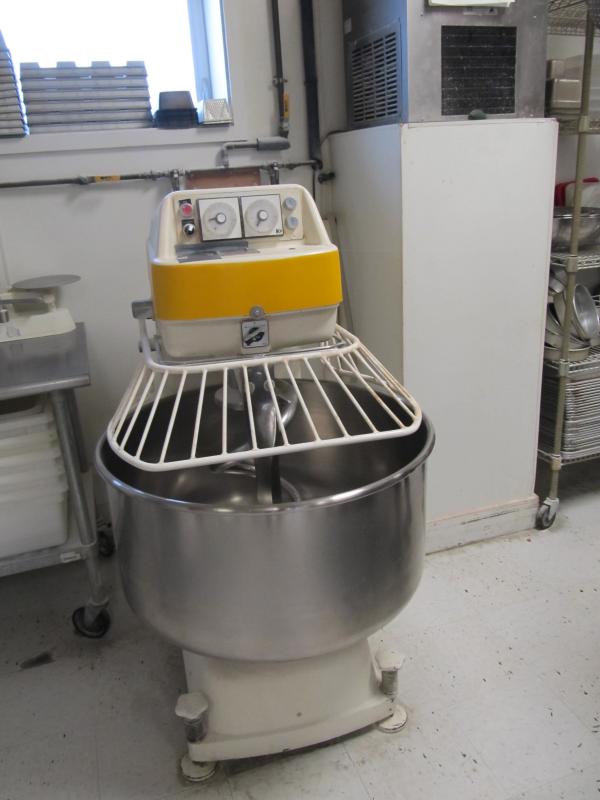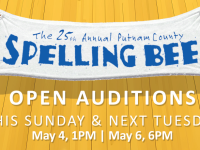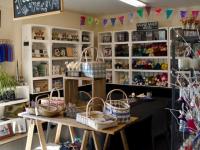The art of baking traditional Irish soda bread
 Traditional Irish soda bread made with caraway seeds, raisins and plain at Atlantic Baking Co. (Photo by Kay Stephens)
Traditional Irish soda bread made with caraway seeds, raisins and plain at Atlantic Baking Co. (Photo by Kay Stephens)
 The traditional mixer.
The traditional mixer.
 Traditional Irish soda bread made with caraway seeds, raisins and plain at Atlantic Baking Co. (Photo by Kay Stephens)
Traditional Irish soda bread made with caraway seeds, raisins and plain at Atlantic Baking Co. (Photo by Kay Stephens)
 The traditional mixer.
The traditional mixer.
ROCKLAND — When most of us are winding down for the evening, Atlantic Baking Co.’s head bread baker, Lynn Butman, is just getting to work. Arriving at 8 p.m., she works until 3 a.m. making breads and gets ready to leave just as the morning shift comes in to make the croissants and pastries.
Butman did a lot of baking with her grandmother when she was young, and that is when she learned how to make traditional Irish soda bread.
“It’s really simple,” she said. Irish baking over the centuries, according to The History of Soda Bread, didn’t rely on much yeast.
“Back then, the quality of wheat that certain Irish regions could grow yielded a softer wheat, which is the main structure of the bread,” said Butman. “So, the simplicity of the soda bread was that the texture and the way it was baked didn’t require a lot of gluten. It would have a soft, crumbly interior with a hard crust.”
Soda bread was simply made of wheat flour, buttermilk, bicarbonate of soda (or baking soda) and salt. “People often think that the Irish originated this kind of bread, but actually, it goes back centuries to Native American cultures,” said Butman. “They found bicarbonate in pot ash, which is the dying embers of wood fires, and they used that as a leavening agent in their bread. Ireland was the first country to adapt that baking process when baking soda was sold commercially in the 1800s.”
Buttermilk, one of the four ingredients, is a form of “soured milk.” Buttermilk was plentiful in Ireland, “because they didn’t have a good strong wheat source, the buttermilk would activate the ingredients,” said Butman.
In England, people got their bread mostly from bakeries, but according to The Kitchen Project, the Irish felt baking was the housewife’s job. Most families lived in rural, isolated farmhouses, where most kitchens had only open hearths, not ovens. The lady of the house would prepare it in a Dutch oven-type of a pot, called a bastible, which hung over the fire on a crane. The heat from below, along with a few coals on top of the indented lid would produce a roundish cake-like loaf. Or else, she might prepare it on a bakestone, on an iron plate resting on the fire’s embers.
The Irish would use the bread as a staple and make it every three or four days and serve it with supper. Soda bread could be eaten at breakfast as well as with dinner to sop up the gravy of hearty Irish food, such as Irish stew and Colcannon. Later, soda bread would be made with caraway seeds for flavor, or with raisins, which was called “Spotted Dog” for its appearance.
Butman said Atlantic Baking Co. will have plenty of loaves of Irish soda bread available on St. Patrick’s Day, along with corn breads and miche, another version of a rustic sourdough bread.
Click to see Irish soda bread recipes.
“A correspondent of the Newry Telegraph, in giving the below recipe for making "soda bread," stated that ‘There is no bread to be had equal to it for invigorating the body, promoting digestion, strengthening the stomach and improving the state of the bowels.’ It continues: “He says, 'put a pound and a half of good wheaten meal into a large bowl, mix with it two teaspoonfuls of finely-powdered salt, then take a large teaspoonful of super-carbonate of soda, dissolve it in half a teacupful of cold water, and add it to the meal; rub up all intimately together, then pour into the bowl as much very sour buttermilk as will make the whole into soft dough (it should be as soft as could possibly be handled, and the softer the better,) form it into a cake of about an inch thickness, and put it into a flat Dutch oven or frying-pan, with some metallic cover, such as an oven-lid or griddle, apply a moderate heat underneath for twenty minutes, then lay some clear live coals upon the lid, and keep it so for half an hour longer (the under heat being allowed to fall off gradually for the last fifteen minutes,) taking off the cover occasionally to see that it does not burn.' This, he concludes, when somewhat cooled and moderately buttered, is as wholesome food as ever entered man's stomach. Wm. Clacker, Esq., of Gosford, has ordered a sample of the bread to be prepared, and a quantity of the meal to be kept for sale at the Markethill Temperance Soup and Coffee Rooms." — Oldest reference to Irish soda bread recipe, published in November 1836 Farmer's Magazine (London).” (Courtesy sodabreadinfo.com)
Kay Stephens can be reached at news@penbaypilot.com
Event Date
Address
United States
























